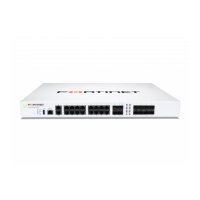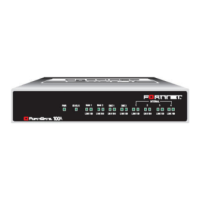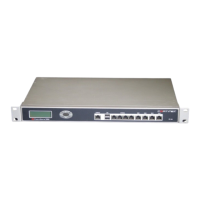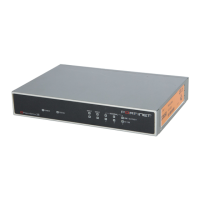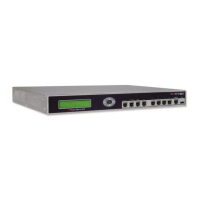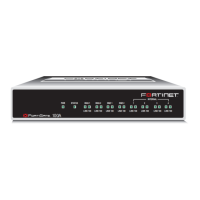294 01-28006-0010-20041105 Fortinet Inc.
Hub and spoke VPNs VPN
Configuring spokes
A remote VPN peer that is functioning as a spoke requires the following configuration:
• A tunnel (AutoIKE phase 1 and phase 2 configuration or manual key configuration)
for the hub.
• The source address of the local VPN spoke.
• The destination address of each remote VPN spoke.
• A separate outbound encrypt policy for each remote VPN spoke. These policies
allow the local VPN spoke to initiate encrypted connections.
• A single inbound encrypt policy. This policy allows the local VPN spoke to accept
encrypted connections.
To create a VPN spoke configuration:
1 Configure a tunnel between the spoke and the hub.
2 Add the source address. One source address is required for the local VPN spoke.
See “To add an address” on page 208.
3 Add a destination address for each remote VPN spoke. The destination address is the
address of the spoke (either a client on the Internet or a network located behind a
gateway).
See “To add an address” on page 208.
4 Add a separate outbound encrypt policy for each remote VPN spoke. These policies
control the encrypted connections initiated by the local VPN spoke.
The encrypt policy must include the appropriate source and destination addresses
and the tunnel added in step 1. Use the following configuration:
See “To add a firewall policy” on page 204.
5 Add an inbound encrypt policy. This policies controls the encrypted connections
initiated by the remote VPN spokes.
The encrypt policy for the hub must include the appropriate source and destination
addresses and the tunnel added in step 1. Use the following configuration:
Source The local VPN spoke address.
Destination The remote VPN spoke address.
Action ENCRYPT
VPN Tunnel The VPN tunnel name added in step 1. (Use the same tunnel for all encrypt
policies.)
Allow inbound Do not enable.
Allow outbound Select allow outbound.
Inbound NAT Select inbound NAT if required.
Outbound NAT Select outbound NAT if required.

